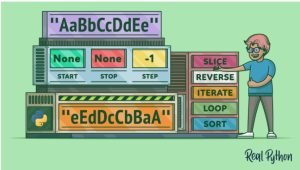How to Use Reverse Case for Technical Writing
Introduction:
Reverse case is a formatting technique that can add a unique touch to your writing. By writing text upside-down or mirrored, you can create a distinctive look that catches the reader’s attention. However, when it comes to technical writing, reverse case is not typically used because it can make the text difficult to read and understand.
In this guide, we will discuss how to use the reverse case effectively in technical writing. We will explore when and where reverse cases can be used, as well as some tips for ensuring that your text remains clear and readable. Whether you are looking to add some variety to your document or simply want to experiment with a new formatting technique, this guide will help you use the reverse case in a way that enhances your writing
Reverse case, also known as mirrored text or upside-down text, is a formatting technique where text is written in such a way that it appears to be upside-down or inverted. While reverse case can be a fun way to add some novelty to a document, it is not typically used in technical writing as it can make the text difficult to read and understand.
If you do decide to use the reverse by backwards translator case in technical writing, it should be used sparingly and only for specific purposes, such as for headings or to draw attention to a particular point. Here are some tips on how to use reverse case effectively:
Use it sparingly: Reverse cases can be difficult to read and may be distracting, so use it sparingly and only for specific purposes.
Use it for headings: If you want to draw attention to a particular heading or section, you can use a reverse case to make it stand out.
Use it for emphasis: You can use the reverse case for emphasis, such as to highlight a particular point or to add some variety to your document.
Don’t use it for large blocks of text: Reverse cases can be difficult to read for large blocks of text, so avoid using it for paragraphs or long sections.
Test readability: Before finalizing your document, test the readability of any reverse case text to ensure that it is still clear and easy to read.
In summary, while the reverse case can add some visual interest to technical writing, it should be used sparingly and only for specific purposes to avoid making the text difficult to read and understand.
How does reverse case work for Technical Writing?
Reverse cases can work in technical writing in several ways. It can be used for headings, titles, or section headings to make them stand out and draw attention to the important points. In this way, the reverse case can add some visual interest to technical writing and help to break up large blocks of text.
Another way that the reverse case can be used in technical writing is for emphasis. For example, you may want to highlight a key point, quote, or statistic by using a reverse case to make it stand out from the surrounding text. This can be an effective way to draw the reader’s attention to important information and help them retain it.
However, it’s important to note that reverse cases can also make technical writing more difficult to read and understand. Therefore, it should be used sparingly and only for specific purposes. When using the reverse case in technical writing, it’s important to ensure that the text remains clear and readable. Testing the readability of any reverse case text before finalizing the document is also important to ensure that the text is still easy to read and understand.
Overall, reverse case can be a useful tool in technical writing when used appropriately. It can add some visual interest and emphasis to key points, but should be used with caution to avoid making the text difficult to read and understand.
How do you reverse an outline of text?
To reverse an outline of text, you can use a text formatting tool or website that allows you to generate upside-down or mirrored text. Here’s one way to do it:
Write the outline of text that you want to reverse in a text editor or word processor.
Copy the text and go to a website or tool that can reverse text, such as Upside Down Text or Flip My Text.
Paste the text into the tool or website and select the option to reverse or flip the text.
Copy the reversed text and paste it back into your document.
Adjust the formatting as necessary to ensure that the reversed text is legible and consistent with the rest of the document.
It’s important to note that reversed text can be difficult to read and may not be appropriate for all types of documents. Therefore, it’s best to use reversed text sparingly and only for specific purposes, such as to create a unique heading or draw attention to a particular point.
Conclusion:
In conclusion, reverse cases can be a useful tool for adding visual interest and emphasis to technical writing. It can be used for headings or to highlight key points, but should be used sparingly to avoid making the text difficult to read and understand. When using the reverse case, it’s important to test the readability of the text and ensure that it remains clear and consistent with the rest of the document. While reverse case can be a fun formatting technique, it’s important to remember that readability and clarity should always be a top priority in technical writing.
Also Read : How to Support Employee Development
Also Read : Transform Your Business with IT AMC Services in Dubai

